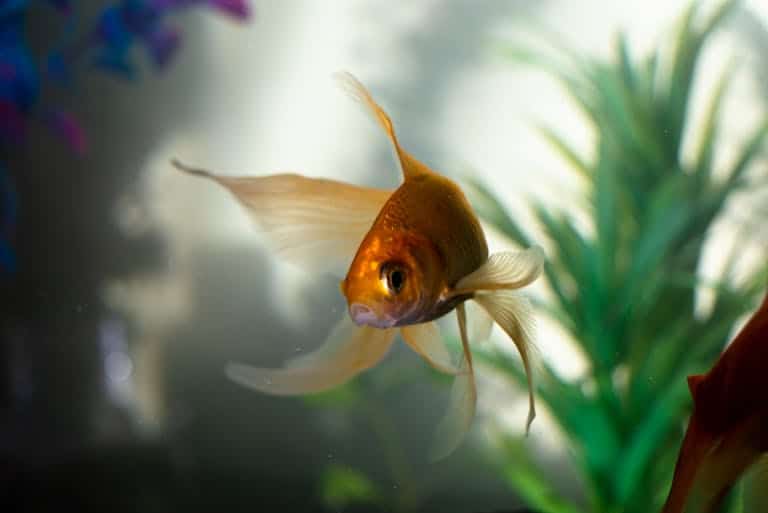Like many nocturnal creatures, fish can see in low-light conditions. However, their reliance on vision alone for survival is limited, as they engage various senses, such as smell, taste, and touch, to navigate their underwater world. You should learn the answer to the question, “Are fish attracted to light at night?” Nevertheless, the role of light in influencing fish behavior at night is a fascinating aspect of their ecology.
Are Fish Attracted to Light at Night?
So, are fish attracted to light at night? Yes, fish are attracted to light at night. This behavior is known as positive phototaxis. Fish exhibit an innate attraction to light during the nighttime hours, and this inclination has several underlying reasons.
1. Plankton
Plankton, microscopic organisms suspended in the water, serve as a primary food source for many fish species. Light can attract plankton, forming a concentration of these tiny organisms, which, in turn, draws in fish looking for an easy meal.
2. Baitfish
Baitfish, the smaller fish consumed by larger predators, also show an affinity for light. The illumination can make baitfish more visible, providing a clear target for larger fish searching for sustenance.
3. Bioluminescence
Certain fish species possess the remarkable ability of bioluminescence, generating their light. This self-produced light serves various purposes, including attracting mates, communicating with fellow fish, and deterring potential predators. It contributes to the intricate dance of light and life beneath the water’s surface.
4. Varied Attraction Among Fish Species
Not all fish respond to light in the same way. Active at night, nocturnal species tend to be more attracted to light than their daily counterparts, active during the day. The reliance on light is particularly pronounced in nocturnal fish, aiding them in locating food sources and avoiding potential threats. Now you know the answer – are fish attracted to light at night?
The Role of Light Color
The color of light can significantly influence how fish respond. Many fish species exhibit a preference for specific colors of light. For instance, green light holds particular allure for various fish, as it closely resembles the color of plankton. Understanding these color preferences is crucial for attracting or observing specific fish species.
Artificial Light’s Impact on Fish Populations
While offering fishing advantages, artificial light has a nuanced impact on fish populations that extends beyond the immediate catch-and-release scenario. Understanding the broader consequences is vital for maintaining the delicate balance within aquatic ecosystems.
Negative Impacts
Disorientation and Vulnerability
One of the foremost concerns associated with artificial light is the potential for disorienting fish. The unnatural glow can interfere with their navigational instincts, leading them away from their usual habitats or migration routes.
This disorientation disrupts their natural behaviors and exposes them to heightened predator risks. In the perpetual dance between prey and predator, artificial light can tip the scales unfavorably for fish, making them more susceptible to predation.
Altered Reproductive Patterns
Artificial light can interfere with the reproductive cycles of certain fish species. For those relying on natural light cues for spawning, introducing artificial illumination might disrupt their ability to reproduce successfully. This disturbance in reproductive patterns has cascading effects on fish populations, potentially leading to declining numbers and genetic diversity.
Impact on Aquatic Food Chains
The concentration of artificial light in specific areas can alter the dynamics of aquatic food chains. Attracting smaller organisms like plankton and baitfish may disrupt the balance between predator and prey.
Such disruptions can have ripple effects, affecting the entire ecosystem. For instance, an overemphasis on attracting smaller fish might increase their population, placing strain on the resources they depend on and affecting the larger predators that rely on them.
Positive Impacts
Enhanced Fishing Opportunities
Despite these negative aspects, artificial light remains a valuable tool for anglers. It increases visibility, making it easier for fishing enthusiasts to target specific species and improve their catch rates. This enhanced visibility is particularly beneficial for night fishing, allowing anglers to diversify their experiences and catch a wider array of fish.
Scientific Observation and Research
Artificial light also facilitates scientific observation and research. Biologists and researchers utilize artificial light to study fish behavior, migration patterns, and the overall health of aquatic ecosystems.
This insight is crucial for developing effective conservation strategies and understanding the broader ecological implications of human activities on fish populations.
Conclusion
The attraction of fish to light at night is a complex interplay of ecological factors. Understanding this phenomenon is crucial for anglers, researchers, and conservationists alike. While artificial light can be a valuable asset for fishing enthusiasts, its use requires thoughtful consideration of the potential impacts on fish behavior and ecosystems.
Striking a balance between artificial light’s benefits and drawbacks is essential to ensuring the sustainable coexistence of humans and the diverse aquatic life that inhabits our planet’s waters. I hope now you know, “Are fish attracted to light at night?”
Some of the links in this post are affiliate links. This means if you click a link and make a purchase we will receive an affiliate commission at no extra cost to you.
